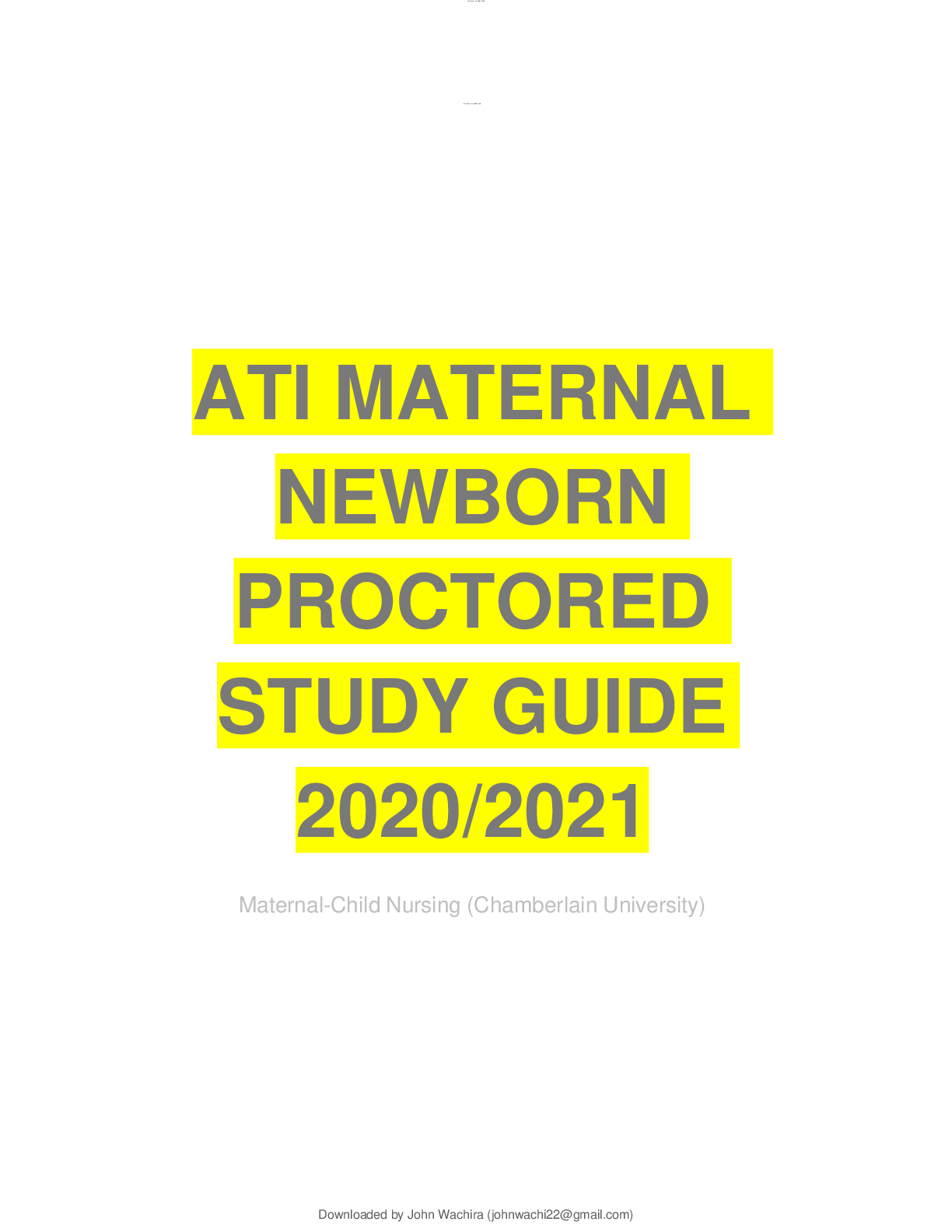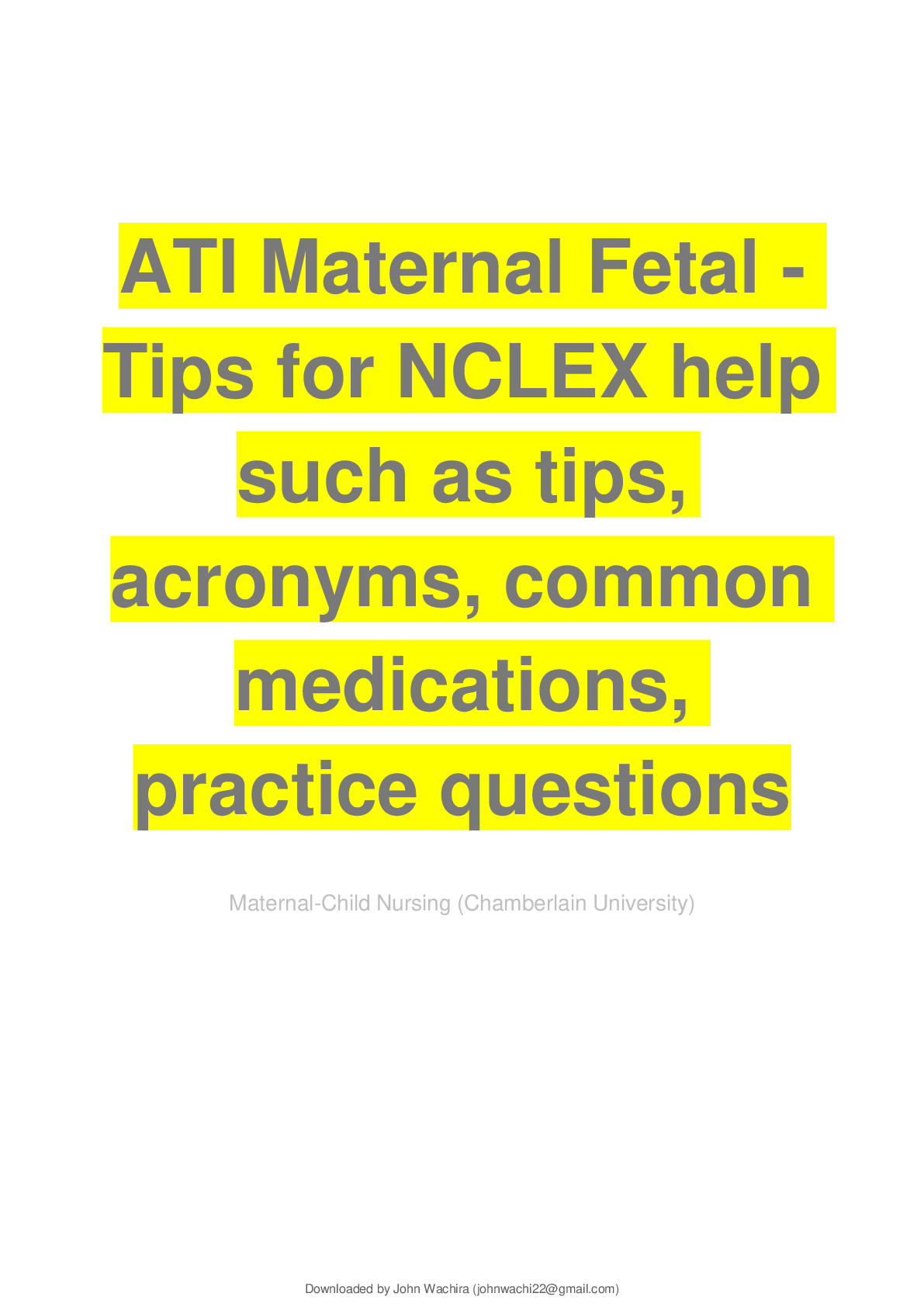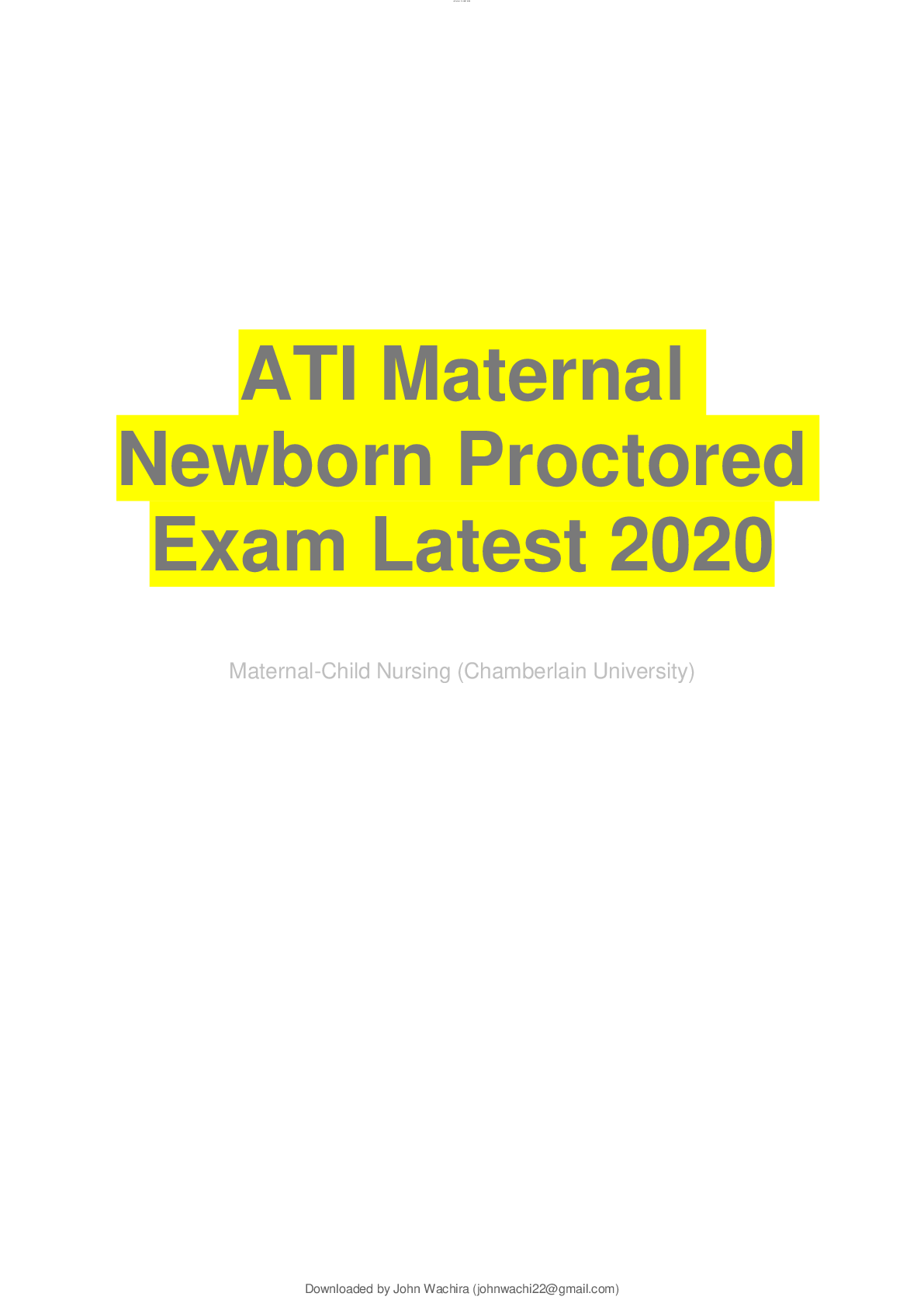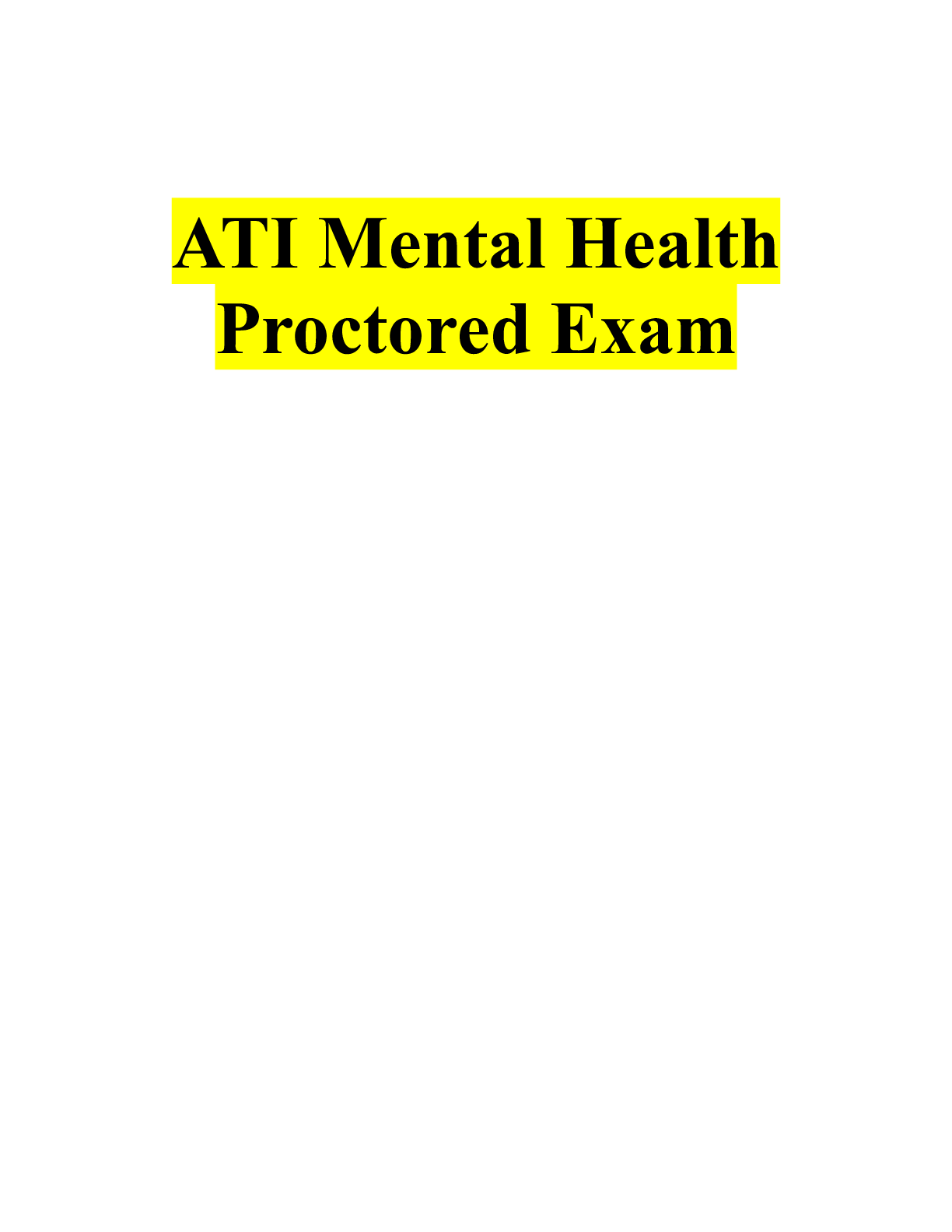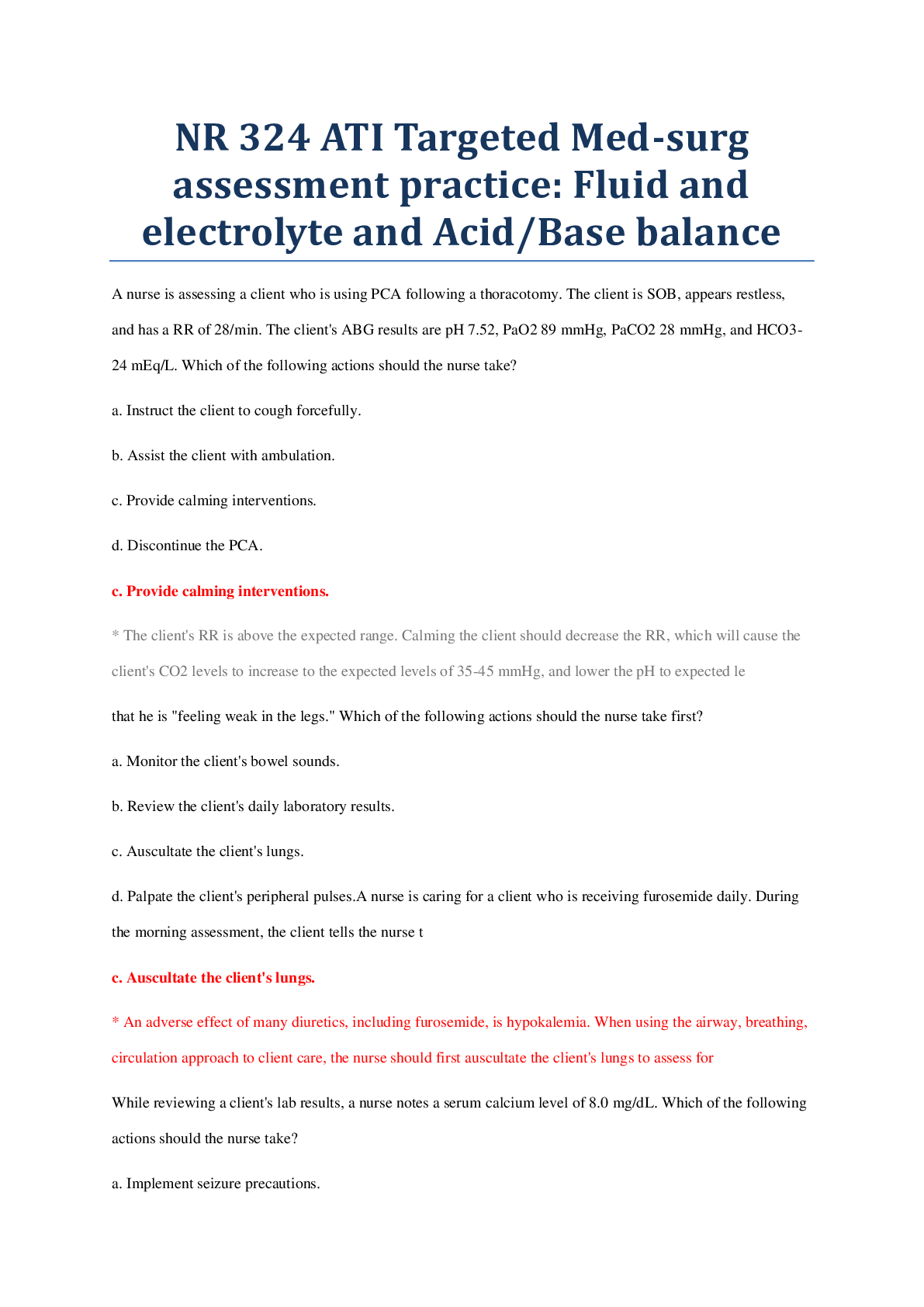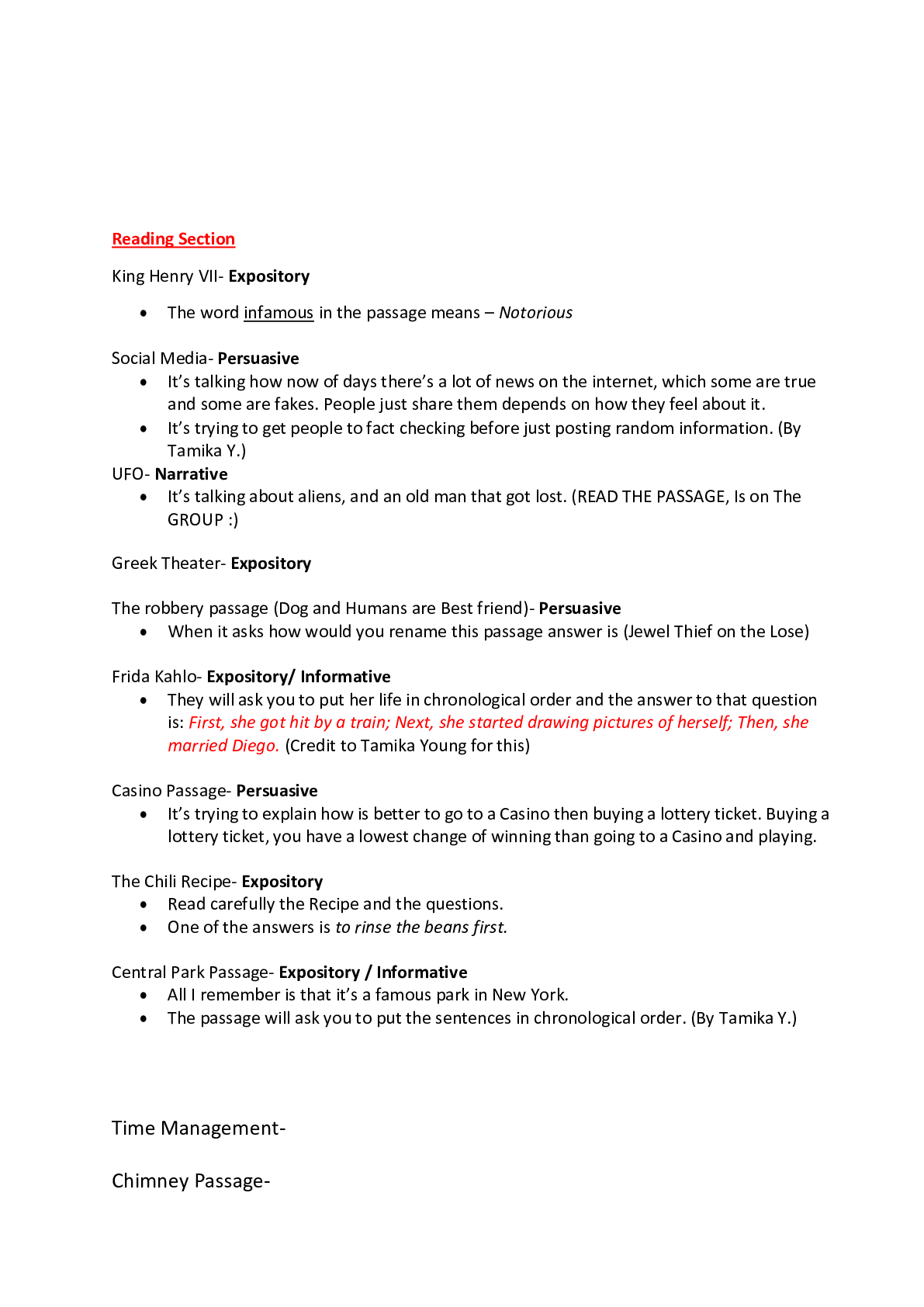Health Care > ATI > ATI Proctored Exam (All)
ATI Proctored Exam
Document Content and Description Below
ATI Proctored Exam 1. A nurse is caring for a client who is at 33 weeks gestation following an amniocentesis. The nurse should monitor the client for which of the following complications? a. cont... ractions b. Hypertention c. Epigastric pain d. vomiting Answer: a. Contraction Rational: Amniocentesis -Can't be done before 16 weeks, not enough amniotic fluid. -maternal risks: hemorrhage, feto maternal hemorrhage, infection, contractions/labor, abruptio placentae, damage to intestines or bladder, amniotic fluid embolism -fetal risks: death, hemorrhage, infection, direct injury from the needle, miscarriage, and preterm, leakage of amniotic fluid 2. A nurse is providing teaching to an older adult client about methods to promote nighttime sleep. Which of the following instructions should the nurse include? a. Stay in bed at least 1 hr if unable to fall asleep. b. Take a 1 hr nap during the day c. Perform exercises prior to bedtime d. Eat a light snack before bedtime Answer:D. Eat a light snack before bedtime Rational:Consume a light snack of carbohydrates at bedtime 3. A nurse on a telemetry unit is caring for a client who becomes unconscious and whose monitor displays ventricular tachycardia. Which of the following actions should the nurse first take determining the client does not have a palpable pulse? a. Assess heart sounds b. Defibrillate c. Establish IV access d. Administer Epinephrine Answer:B. Defibrillate Rational: The nurse needs to assess the client to determine stability before proceeding with further interventions. If the client has a pulse and is relatively stable, elective cardioversion or antidysrhythmic medications may be prescribed. The drug of choice for stable ventricular tachycardia with a pulse is amiodarone. If the client is pulseless or nonresponsive, the client is unstable and defibrillation is used 4. A nurse is admitting a client who is one week postpartum and reports excessive vaginal bleeding. The nurse does not speak the same language as the client the client’s partner and 10-year-old child are accompanying her. Which of the following actions should the nurse take to gather the client’s admission data? a. Have the client’s child translate b. Allow the client’s partner to translate c. Request a female interpreter through the facility d. Ask a nursing student who speaks the same language as the client to translate. Answer: C. Request a female interpreter through the facility Rational: We been told not to use family members if not facility interpreters 5. A nurse is caring for a client who is febrile(fever). To reduce the client’s fever, the nurse applies cooling. Which of the following indicates the client is having an adverse reaction to the cooling? a. Flushing b. Tachycardia c. Restlessness d. Shivering Answer: D. shivering Rational: Hypothermia is the adverse reaction of cooling system for a febrile patient s/s of hypothermia: shivering, slurred speech, weak pulse drowsiness, confusion, loss of memory 6. A nurse is caring for a client who has deep-vein thrombosis of the left lower extremity. Which of the following actions should the nurse take? The Answer should be: ensure that the lower extremity is elevated. Rational: DVT causes edema; therefore, the UAP should elevate the extremity to promote venous return. Dependent positioning is appropriate for a client with arterial insufficiency. Placing a pillow under the knee would position the foot in a low position, and pressure behind the knee may obstruct venous flow. Massaging the extremity could dislodge the thrombus 7. A nurse is reviewing assessment data from several clients. For which of the following clients should the nurse recommend referral to a dietitian? a. An older adult client who has BMI of 24 b. A client who has a nonhealing leg ulcer c. An older adult client who had presbyopia d. A client who has an albumin level of 3.7 g/dl Answer:B. A client who has a nonhealing leg ulcer Rational: type of patients that can be referred to dietitian are the ones that present: Physical S&S Malnutrition Hair is dull, brittle, dry, or falls out easily Swollen glands of neck and cheeks Dry, rough, or spotty skin Poor or delayed wound healing or sores Thin appearance with lack of subcutaneous fat Muscle wasting Edema of lower extremities Weakened hand grasp Depressed mood Abnormal heart rate/rhythm and BP Enlarged liver or spleen Loss of balance and coordination Presbyopia: farsighted [Show More]
Last updated: 2 years ago
Preview 1 out of 54 pages
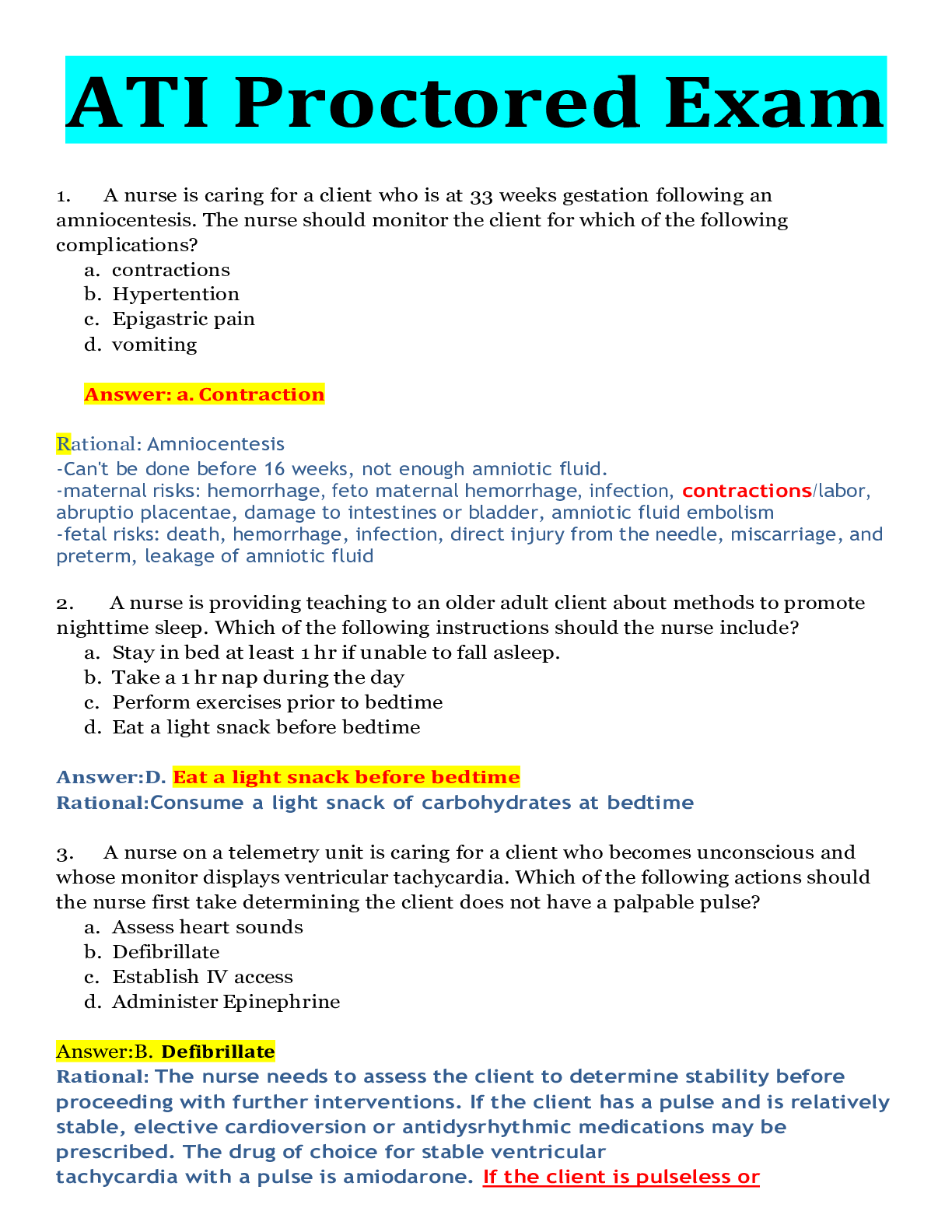
Buy this document to get the full access instantly
Instant Download Access after purchase
Buy NowInstant download
We Accept:

Also available in bundle (1)

ATI Exam with 100% Correct Answers
ATI Exam with 100% Correct Answers
By Best Tutor 2 years ago
$33.5
8
Reviews( 0 )
$8.00
Can't find what you want? Try our AI powered Search
Document information
Connected school, study & course
About the document
Uploaded On
Oct 16, 2022
Number of pages
54
Written in
Additional information
This document has been written for:
Uploaded
Oct 16, 2022
Downloads
0
Views
75

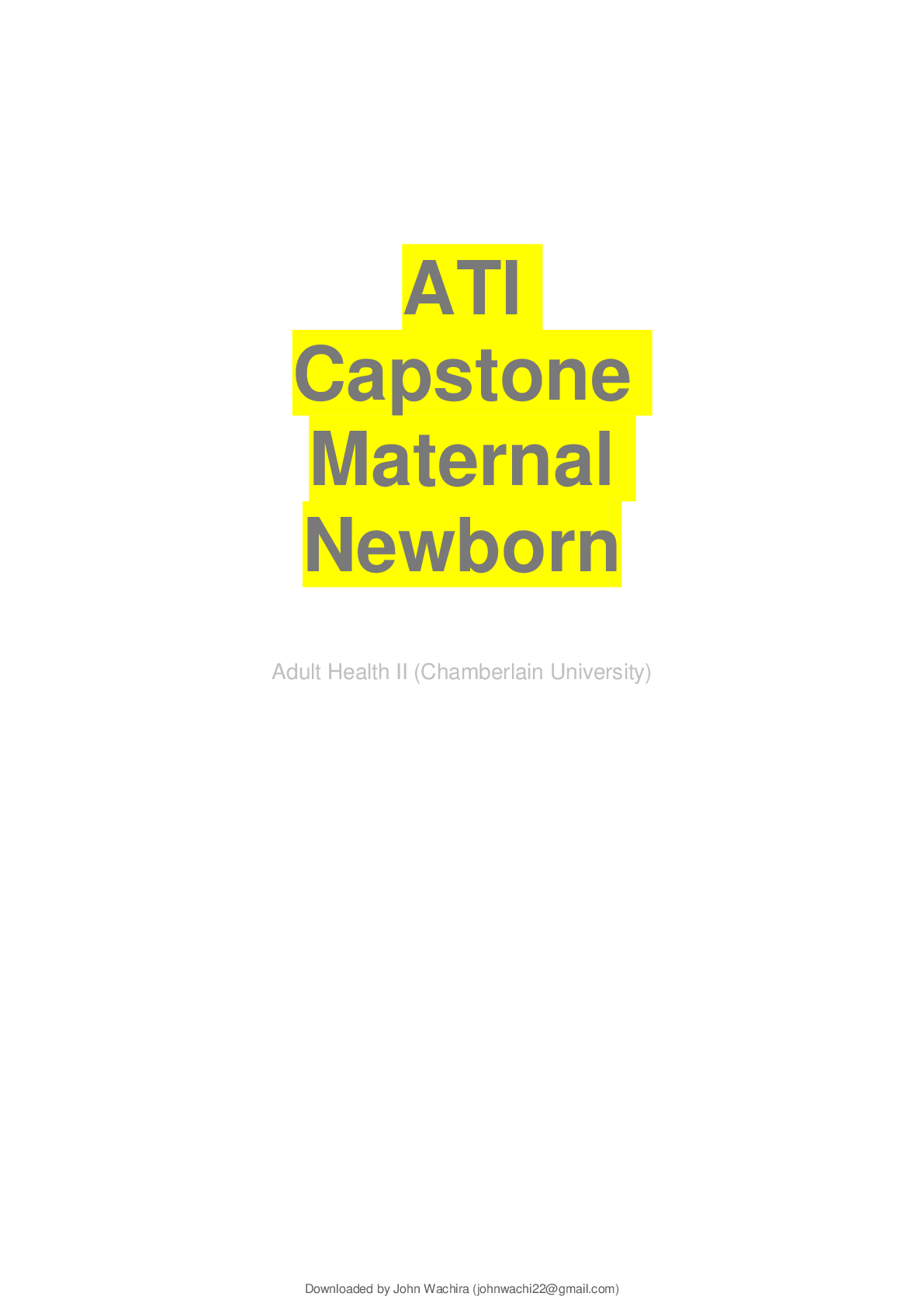
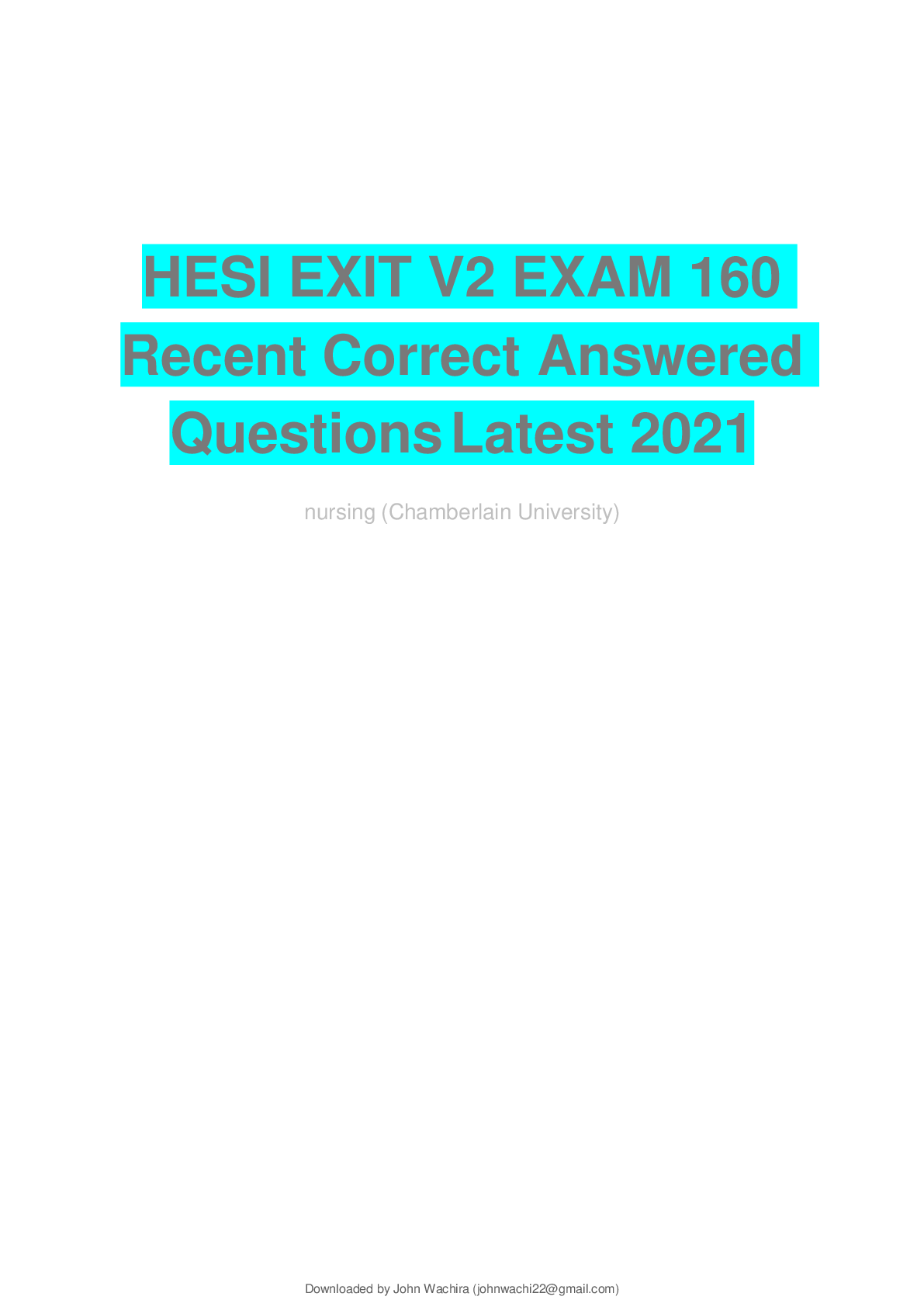
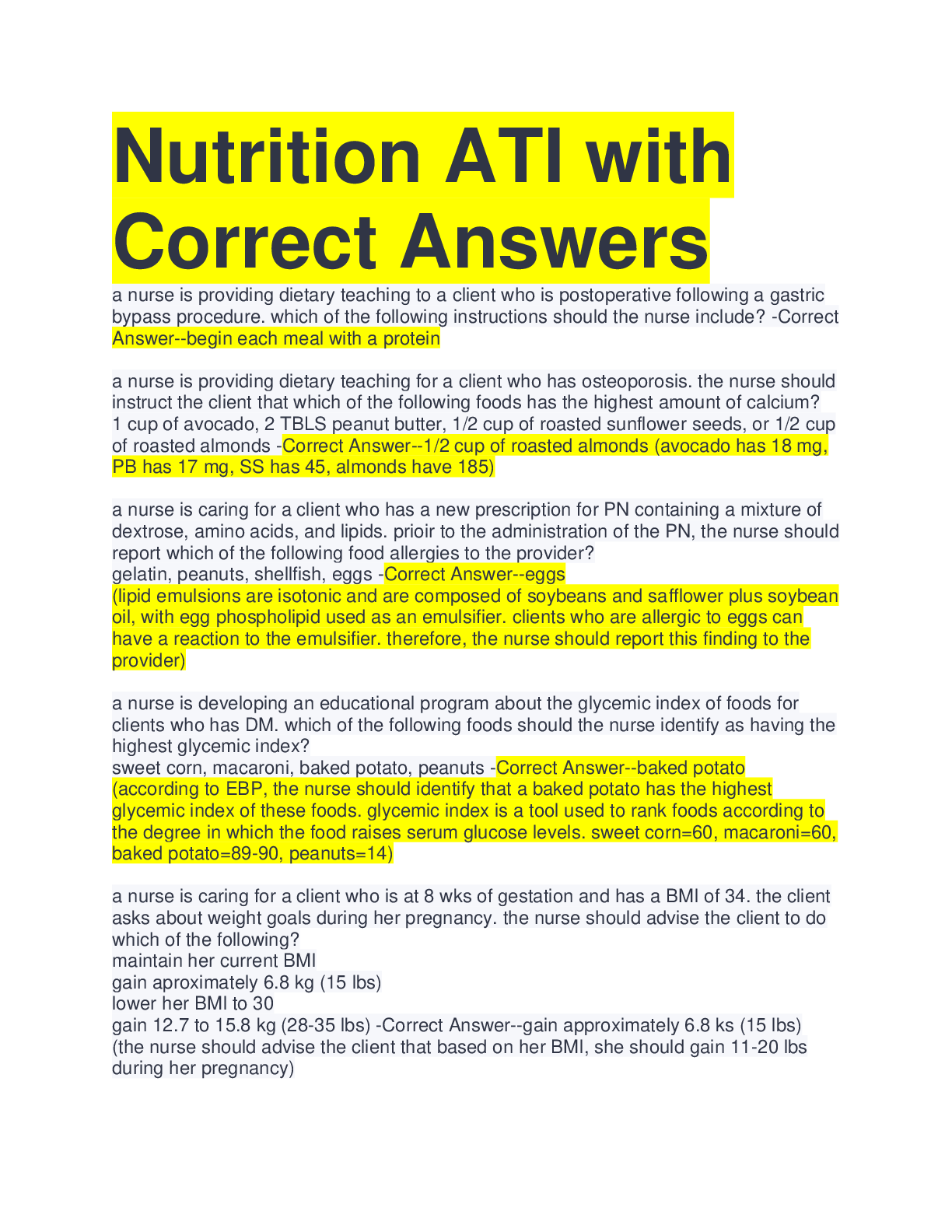

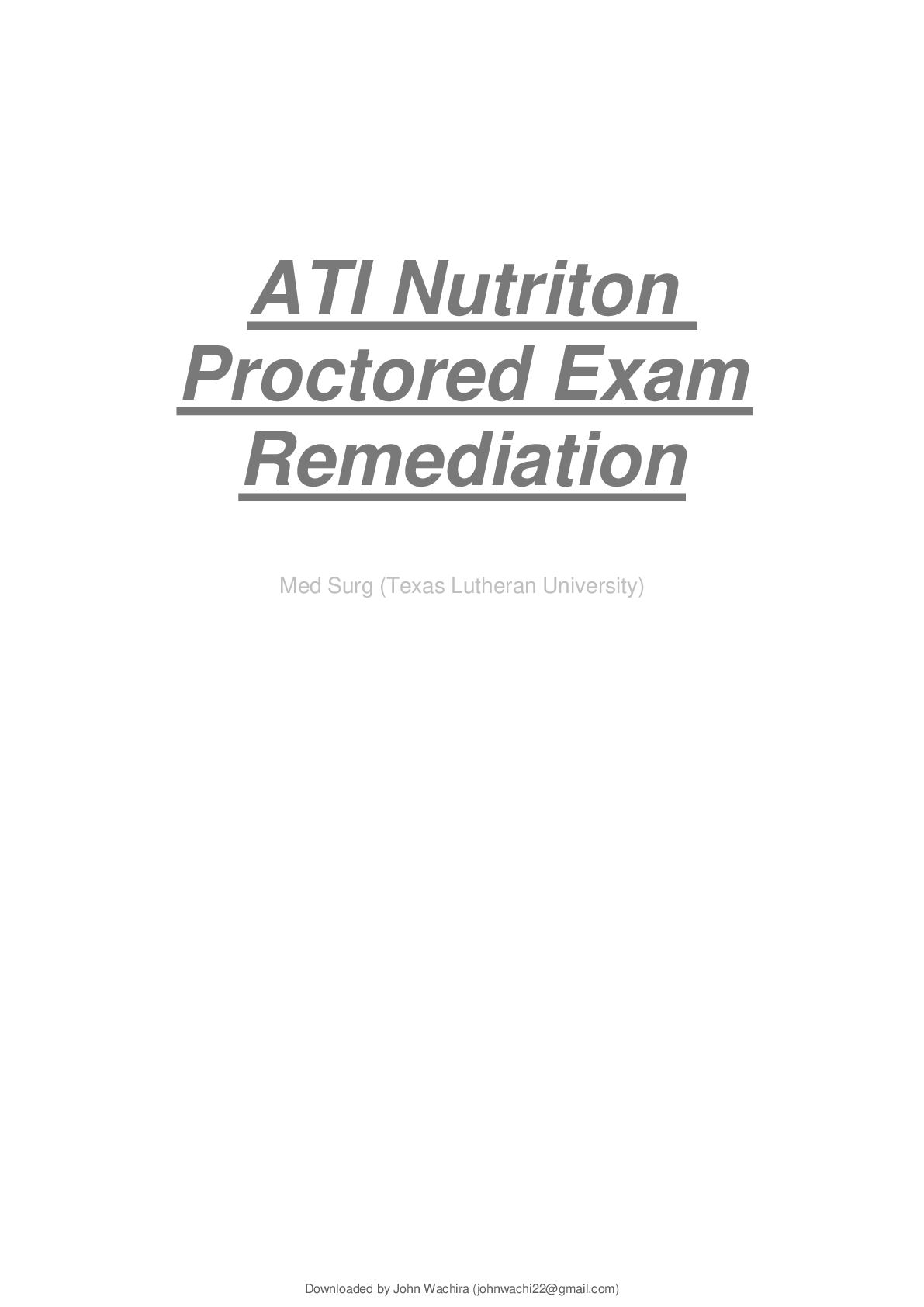
.png)
